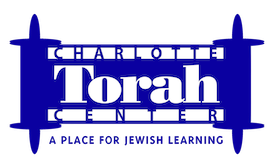Write this song for yourselves… (31:19)
Jewish Trivia Question: What is the last mitzvah in the Torah? The last of the 613 mitzvos is the obligation to write a Sefer Torah (Torah scroll). Imagine if there would be a law in the United States that every citizen had to write a copy of the constitution. Imagine if a football coach obligated every player to write a copy of the playbook. The reason would be obvious; so that the citizen study and know the constitution or that the football players be well versed in the team’s plays. The same is true for this mitzvah. It so important that even if one inherited a Torah scroll, it would still be incumbent upon him to write one. The reason for this mitzvah is to help learn and spread the eternal Jewish ideas, lessons, and values found in the Torah. If each of us fulfilled this mitzvah, we would be more in touch with our Judaism. Think of how well versed every member of the community would be if we all wrote and possessed a Torah. Write for yourselves this song – “this song” is the Torah – and teach it to the children of Israel. It’s not enough merely to write a Torah and leave it in a closet; it was meant to be taught!
Practically speaking, not every individual has the knowhow to do so or the financial resources to commission the writing of one but there is another, more practical way to fulfill this mitzvah today; it was suggested by one of the greatest Talmudists of the middle ages, Rabbeinu Asher (1250-1328), known simply by the acronym Rosh). He writes that in previous eras, the Torah scroll was the only text that Jews could actually use for study but nowadays the Torah scroll is stored in the synagogue for public readings rather than used as a study text. Therefore, the obligation of writing a Torah scroll can be fulfilled by purchasing Torah based books (seforim) that can be used for study. But let’s return to the basic idea that the mitzvah to write a Torah or own and study Torah related books is learned from the verse commanding us to literally write a song. What does “song” have to do with writing and studying a Torah scroll?
The 19th century classic HaKesav VeHakabalah is a work that shows connections between the Written and the Oral Torah by analyzing the precision of the Hebrew text. He questions the Torah’s choice of language and asks why the Torah called is called a ‘song.’ If one had to describe the Torah in one word, ‘song’ would most likely not be it. Why is the mitzvah to write the Torah expressed as “write this song?”
HaKesav VeHakabalah answers that the word shir (song) has three Hebrew letters in it; shin-yud-reish. These are the same letters as the word “yashar,” which means ‘straight. He explains, “If you want music to be appealing, the notes need to follow one another in a perfectly arranged order to provide a harmonious melody.” Once music goes off key it greatly bothers the listener. This is the essence of shirah (song): A flow, a precise sequence of the components of a song, which is a pattern of one note following another in carefully planned arrangement. When the notes are off, the song loses its pleasantness.
The Torah is called shirah, song, by one of the prophets when he says “…behold it is written in the Sefer haYashar (the Straight Book)…” (Joshua 10:13). The Torah is a book of yashrus – being straight.
The word that defines Torah is Yashar (straight). That means being honest, no tricks, no deception. This is what the Sefer HaYashar represents. Unfortunately, we live in a time when this we hear too many stories of outwardly looking religious people who are inwardly not yashar. We all cringe when we hear them because that is not the way it is supposed to be but on the other hand, we have many stories showing the unique “straightness” of leaders in the Torah camp. Here is one such story.
Rav Yakov Kamenetsky was a Rabbi in Toronto. One Purim, his community gave him a silver platter. A few of days later, a congregant saw him at a pawnshop looking as though he was trying to pawn the silver tray. The congregant went back to the members of the shul and told them. The President called in the Rabbi and asked an explanation (“What kind of a Rabbi pawns a present given to him by his congregation?”). Rav Kamenetsky told them that he held, based on earlier sources, that the presents a Rabbi gets from his congregation for Purim and Passover are to be considered as part of his salary. “If it is part of my salary, I have to report it on my taxes. Therefore, I went to the pawn shop to find out the fair market value of the tray so I could accurately declare it.” This is yashrus-Jewish straightness.
When people think about Jewish practice, they think of Sabbath observance, kosher, not eating chometz on Passover and other areas of ritual. However, the bulk of mitzvos in daily life revolves around our private and public dealings with others. Being “straight” is a challenge because it involves something very dear to me-money.
How does one become yashar (“straight”)? It begins with authentic Jewish learning. When one sees the depth and rationality of the system of values contained in the Torah’s teachings, he or she will understand its uniqueness and ability to transform a person. For Jews, sometimes a song is not just a part of speech, it is an opportunity to teach.

